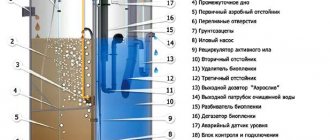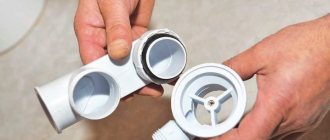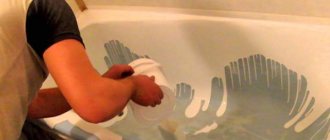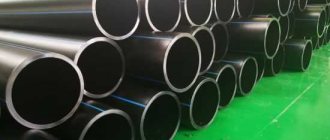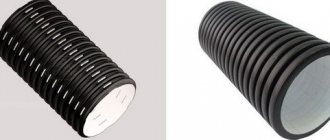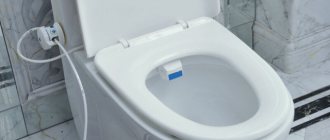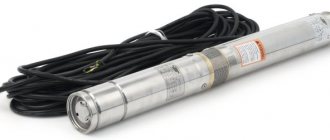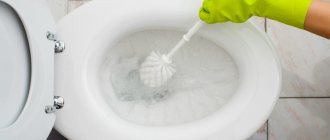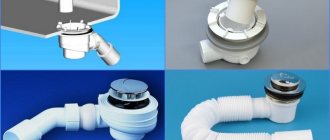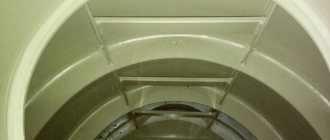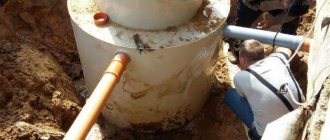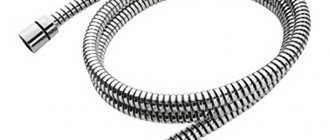Peat dry toilets have become an excellent alternative for arranging a latrine in places where there is no possibility of sewerage. Increasingly, they are used in dachas and country houses instead of simple yard toilets with a cesspool. For these modern structures, special means have been developed - peat mixtures that process waste into compost fertilizers.
Mixture for peat toilets
Why do you need peat filler?
People who bought peat filler for a dry closet do not think about the number of useful functions that this mixture performs. You need to know everything about the capabilities of this product in order to use them with maximum economic benefit and efficiency.
The main objectives of peat mixtures for dry toilets are:
- Inhibition of the development of pathogenic bacteria and insect larvae in waste.
- Removing the unpleasant odor of ammonia and hydrogen sulfide in the bathroom.
- Liquid absorption.
- Biochemical processing of organic substances by bacteria.
Bacterial additives to dry mixtures contain special strains of microorganisms that process human waste to form sludge and water. As a result, even the possibility of the appearance of ammonia and hydrogen sulfide odors is eliminated.
During the activity of bacteria, high molecular weight organic substances are processed into low molecular weight ones, which are an excellent substrate for the production of natural fertilizers. Immediately after cleaning the peat toilet, the resulting biomass cannot be used in the garden - it must undergo a composting process for at least 1 year.
Image gallery
Photo from
Improving sanitary and hygienic conditions
Odor and insect remover
Obtaining environmentally friendly fertilizer
Use of recycled waste in the form of compost
There are other general economic uses of peat filler for dry closets.
The mixture can be used as:
- Substrate for storing root vegetables in the cellar.
- Animal potty filler.
- Above-ground protection of plant root systems in winter.
All options are popular due to their security.
Peat filler can be sprinkled on both tree trunks and flower stems to retain moisture in the soil and prevent the growth of weeds
There are many more useful ways to use peat filler in the country than you might think. These mixtures not only perfectly cope with their functions in dry closets, but can also be used for additional household needs.
General information about the dry toilet
Design
The design of the toilet itself is not anything complicated. It consists of two main containers and an exhaust pipe.
In one container, waste products accumulate, and the second contains the reagent. By turning the handle, the waste is covered with peat.
Reagent
Operating principle
The chemical reagent in this design is peat mixed with sawdust. The mixture contains microorganisms that help process organic waste.
The contents of the storage tank are taken to the compost pit, where processing is completed.
When actively using a dry closet, it is recommended to equip it with a drain for liquid.
Peat
Peat for dry closets differs in its functionality from peat for heating. They perform different functions.
The filler contains the following elements:
- Peat mixture.
- Dry sawdust
- Bacteria
- Pine sawdust and bark.
Limed peat and pine sawdust are not contained in all fillers.
Peat starts the recycling process. Sawdust helps loosen the composition. Bioadditives accelerate the process of sludge formation. Limed peat is effective for better odor absorption. Softwood sawdust strongly absorbs moisture.
If an unpleasant odor occurs, you should discard this filler. This fact suggests that the peat used was not top peat and not limed.
Advantages and disadvantages of mixtures
Before purchasing a dry closet with peat fillers for your dacha, it is recommended that you familiarize yourself not only with the positive aspects of these mixtures, but also with the disadvantages. There are undoubtedly more positive aspects.
These include:
- absence of unpleasant odors;
- good sorption properties;
- environmental friendliness;
- the ability to use waste as fertilizer;
- preventing the proliferation of pathogenic microorganisms and insects;
- long shelf life of mixtures;
- ease of cleaning the waste tank.
It is also worth mentioning frost resistance - a relevant property for northern regions.
After emptying the waste tank, it should be washed with detergent to flush out potentially harmful bacteria and fungi.
The listed advantages allow peat mixtures to constantly win new shares in the country toilet market thanks to word of mouth.
These fillers are not without a number of disadvantages:
- The need for constant purchase and delivery of peat mixture.
- Inoperability of the toilet without filler.
- Limited shelf life, especially in mixtures with bacterial additives.
These disadvantages are not a problem if there is free delivery of peat mixtures in the region or if a person has his own car in which he periodically travels to the city. The purchase of one 50-liter bag should be enough for several months of using the dry closet.
Rules of application and nuances of operation
A country toilet that runs on peat can save the family budget. Now you can enjoy the benefits of civilization without conducting communications. Typically, for a small family of up to 4 people, 3 packets of peat mixture per month are needed for daily use. Each of them is designed for 6 liters.
The operation of a dry closet is simple. After using the equipment for its intended purpose, peat is poured into it either simply with a shovel or using a special dispenser mechanism. Through the drainage hose, waste flows outside the toilet into a specially designated container or into a cesspool. Ventilation eliminates unpleasant odors. The height of the pipe must be at least 3 m.
If you need to calculate the exact consumption of peat, you need to know the volume of the tank. Peat is poured into a container, usually located at the bottom of the device. The required layer of the composition is from 1 to 3 cm. Large containers that can accommodate up to 100 liters of waste along with the dry mixture can be filled with 10 packets of the mixture. In this case, the toilet will be available for use for quite a long time without changing the filler.
Tips for calculating peat filler
There are no uniform standards for determining the level of consumption of peat filler. The more you use it, the less unpleasant odors there will be, but financial costs will also increase.
The consumption of the mixture is important to consider when purchasing a dry closet. If a whole family is planned to live in the house, then it is better to buy larger equipment that will need to be cleaned once a month. When cleaning a large tank, you don't have to move its imposing structure outside.
You can portion out and remove waste biomass without worrying about unpleasant odors.
For a family of three, loading a 6-liter peat container is enough for 2 days, so refilling the dry closet needs to be done much more often than cleaning
The recommended amount of mixture for use after each visit to the toilet is 200-300 ml. Based on this norm, a 50-liter bag should be enough for a month with two people using the toilet every day. The indicated volumes of use of peat filler can vary greatly, depending on the method of nutrition, weight and age of the residents.
Features of the design and operation of the dry closet
A dry closet operating on peat is a collapsible structure with a capacity of 10-200 liters. There are two types: with mechanical and automated supply of filler and a ventilation system. Depending on the manufacturer, toilet components may vary. The standard set is:
- seat;
- lid with tank;
- lower waste container;
- container for peat mixture;
- mechanism for mixing filler and waste.
What does a peat dry toilet look like?
Also, some devices have additional options, for example, a ventilation pipe, a hose for draining liquid, and an internal container to make cleaning the toilet easier.
Many summer residents have become convinced of the effectiveness of the peat system. But the use of this sewage system is not limited to dachas. Due to the fact that for full operation of the device there is no need to connect external communications, they are installed in remote industries, mobile objects, and at distant sites for hunters, tourists or travelers.
Recycled waste from the dry closet is ready-made fertilizer. After the tank is completely filled, its contents are taken to the compost heap. The organic matter remains there until the desired consistency is reached.
Comparison of popular brands of peat fillers
The basis of all peat fillers for dry closets is high-moor peat, but additional additives greatly affect the quality of the final product. The compositions of the most popular mixtures will be discussed below.
Mixture No. 1 – Kekkila (Finland)
The company produces two types of mixtures: Kekkila and Kekkila Hajusieppo.
The Kekkila Hajusieppo mixture consists of 60% high-quality high-quality sphagnum peat and 40% dry sawdust. Packaged in perforated bags of 50 liters. The whole of each package is 15 kg. The recommended mass ratio of filler and waste is 1:2.
The financial benefits of a good peat mixture can only be noticed with long-term use and focusing on the level of unpleasant odors
The Kekkila mixture consists of 60% high-moor sphagnum milled peat with a low degree of decomposition, 20% dry sawdust and another 20% pine bark. Packaged in perforated bags of 50 liters. The whole of each package is 10kg.
The recommended ratio of filler to waste mass is 3:5. Due to the use of pine bark, the percentage of moisture absorption is slightly reduced, but the looseness and flowability of the mixture increases with a large amount of liquid waste. Ventilated packaging prevents the mixture from caking and prevents the development of putrefactive bacteria in it.
Thanks to the use of dried sawdust, the percentage of moisture absorption in fresh mixtures reaches 80% of their original mass. Such indicators increase the effectiveness of the filler. Therefore, despite the price of a 50-liter package of 550-600 rubles, the long-term financial costs of maintaining a dry closet are lower compared to cheap mixtures.
The manufacturer does not recommend storing the product at subzero temperatures because it loses its sorption properties. After defrosting, the characteristics of the filler are restored. In large dry closets, it is recommended to stir the mixture in order to enrich it with oxygen and prevent rotting processes.
Mixture No. 2 – Piteco (Russia)
The peat fillers of this company are produced from Russian high-moor peat with a low degree of decomposition from the sphagnum group using Swedish technology. Coniferous sawdust was added as a leavening agent, and dolomite flour was added as a deoxidizing agent. It also contains enzymes and microorganisms that accelerate the composting process.
This peat mixture is an excellent example of a combination of Russian raw materials and proven foreign technologies. As a result, one of the best peat fillers on the domestic market was obtained
Typically, bacteria are sold in separate packaging so that they do not begin the process of biodegradation of the filler while still in packaged form. But Piteco decided to simplify the maintenance of the dry closet and created a technology that made it possible to combine peat, sawdust and bacteria without compromising product characteristics.
The price of peat filler is 400-450 rubles per 50 liters or 15 kg. Peat mixtures from this company are an excellent choice for budget-conscious people.
Mixture No. 3 – Biolan (Finland)
This manufacturer extracts peat in Finland, and processes and packages the finished product in Estonia. The mixture is made from high-moor peat, clean crushed bark and sawdust from coniferous trees. The recommended ratio of waste to filler is 2:1.
Foreign peat fillers should be treated critically. If the price is high, then it is imperative to read the composition so as not to buy ordinary peat at the price of a high-quality mixture
If an unpleasant odor appears from the dry closet or excessive moisture in the mixture in the waste tank, you need to increase the consumption of the mixture by 25-30%.
There are no bacteria in the mixture, although its cost due to European production and Russian import taxes is much higher than that of Piteco. The cost of a 40-liter package is 520-570 rubles. The filler should be stored in a dry, warm place and be sure to close the packaging tightly if it is not used immediately.
The mixtures from this manufacturer are quite expensive, but their quality is also high.
Mixture No. 4 – PeterPeat (Russia)
PeterPit mixtures consist of crushed purified peat of Russian origin without additives. The shelf life is 3 years, although due to the lack of additional components, the mixture should not lose its properties even after a longer period.
Many Russian manufacturers of peat fillers make beautiful packaging and unreasonably inflate the price of their products, so choose a product based on its composition
The manufacturer recommends storing the mixture at temperatures from -35 degrees below zero to +40 degrees above zero. If the filler has been stored in the cold, it must be thawed before use. The cost of a 50-liter bag is 500-550 rubles, which is expensive for a mixture without any additional additives.
There are many other small producers of peat fillers on the Russian market, whose prices start at 300 rubles for a 50-liter package. Cheap litters are often made from transition peat and contain no additives. Because of this, the mixture formed in the dry closet has a lumpy structure, is prone to rotting and smells bad.
The most affordable companies in terms of price/quality ratio are Kekkila and Piteco, which offer proven quality at a good price.
Do I need to add water to a peat toilet?
Usually, excess water in a peat toilet is not needed, since the moisture that comes with urine is sufficient. However, if the toilet is rarely used, the peat can dry out, so in order not to interrupt the composting process, you need to thoroughly moisten the contents of the bucket with warm water before leaving.
If the peat in the dry closet is dry, you can moisten it with warm water
That’s right, but the key phrase is “dry peat”, i.e. if, for example, the weather is dry or we just rarely come and don’t use the toilet, and we see that the peat is drying out, then in order not to stop the composting process, you just need to wet it peat mass. You must understand that in a dry mass the process slows down and stops, and if possible, it is better to wet it.
Lumix77
https://www.forumhouse.ru/threads/337976/
A DIY peat toilet for your dacha is a good replacement for a traditional outdoor toilet. It is environmentally friendly, convenient, and easy to build. It does not need to be emptied as often as a regular composting toilet and is not as difficult to clean as a pit cesspool. In addition, the compost obtained from waste will serve as an excellent fertilizer. If necessary, a peat toilet can be installed indoors, having thought through a waste removal system and ventilation.
Brief overview of manufacturers and models
Before going to the store, you need to correctly assess the required capacity and dimensions of the plumbing fixtures in question. If a compact design is required, then it is better to opt for a liquid model with a lower capacity of up to 21 liters.
And if you need a more convenient option with longer reboots, then you should take a closer look at the peat analogue with a storage capacity of 100 liters or more.
But which dry toilet for a summer residence is better from the point of view of the country of manufacture and manufacturer? The choice here is frankly small.
The country of production is not particularly important. Both in Russia and in Europe, this plumbing fixture is produced using common technologies and standards. You should not buy only frankly cheap products of unknown origin.
Russian liquid and peat dry closets are in no way inferior to imported analogues, but are slightly cheaper due to the proximity of production to the buyer
Among the main manufacturers:
- for liquid models - “Thetford” (Netherlands), “BIOFORCE” (China) and “Enviro” (Canada-USA);
- for peat devices - “Kekkila” (Finland), “Piteco” (Russia), “Compact-Eco” (Russia) and “Biolan” (Russia).
- for electrical appliances – “Cinderella” (Norway) and “Separett” (Sweden).
Choosing the right model in a plumbing store largely depends on the needs of the buyer. The product range of each presented manufacturer is quite extensive; there are options both portable for transportation by road and stationary for installation in the country on a permanent basis.
When purchasing, it is advisable to focus on the rating of the best dry closets for summer cottages and private homes and reviews from the owners of the model you like.
The price range of dry toilets is wide - from 3000–3500 for a peat model to 80000–90000 for an electric unit with a heated toilet seat. The service life of these devices is the same for almost all manufacturers - up to 10 years.
By definition, they are resistant to filler chemistry; they are more likely to simply break due to old age or mechanical stress.
Don’t want to buy a cheap model, but the option you like is quite expensive? In such a situation, you can make a dry closet yourself. We described in detail what materials are needed and how to assemble it correctly in the next article.
So, when all the nuances have already become clear and understandable, it’s worth moving on to the choice itself and evaluating several models of dry closets. It is necessary to outline their main disadvantages and advantages so that it becomes clearer where you can save money and what it is better to place special emphasis on. In fact, many people consider such a problem not very important until they come face to face with it, but then it becomes too late to sort through the “grubs”.
Today, the Finnish peat toilet for a summer residence is considered the most reliable and comfortable, which is why it is in great demand. The plumbing market offers the consumer many models. According to reviews from summer residents, the following peat dry closets are considered the most popular:
- Finnish peat toilets for summer cottages of the Piteko brand are equipped with drainage with a special filter.
The models have an ergonomic design. The stylish case is made of high quality plastic. Compact dimensions and special connections on the rear side without protrusions allow you to install a peat toilet flush against the wall of a building. The plastic can withstand negative temperatures and does not crack in winter when installed in an outdoor cabin at the dacha. The body of the dry closet is designed for a load of up to 150 kg. The toilet for the Piteco cottage is equipped with direct-flow ventilation, which eliminates bad odors. Among many models, the Piteco 505 dry closet is especially popular due to the partition built into the storage tank. It prevents solids from faeces from blocking the drain. In addition, there is additional protection from a mechanical filter. The peat spreader mechanism is rotated 180° by a handle, which allows for high-quality powdering of waste. The video shows an overview of the Piteco 505 model: - Peat composting toilets from the manufacturer Biolan are made using thermal insulation material. All models are resistant to sudden temperature changes. Most Biolan models have a large capacity. This is a good option for a summer house with a large number of people living or a country cottage. Usually the volume of the storage tank is enough for the whole summer season. One emptying of the tank allows you to create finished compost inside the tank. At the request of the owners, the dry closet is equipped with a thermal seat, allowing you to comfortably use the product in winter. Models with a separator have increased ease of use. This dry closet is made of two chambers designed to collect liquid and solid waste. The storage chamber for solid waste is located inside the body of the peat toilet. The container for liquid waste is located outside and connected to the general system with a hose. The filtered liquid is used to fertilize flowers or as a compost activator. All storage containers are equipped with dispensers that have an odor absorption function.
- Models of Ecomatic peat toilets on the market are presented from Finnish and domestic manufacturers. All of them are made using the same technology. You can find out which manufacturer’s model is better by visiting any thematic forum. Many users still prefer Ecomatic from Finnish manufacturers. Domestic models are made of durable, high-quality plastic. The body is not afraid of severe frosts. A dry toilet can be installed in an outdoor cabin in the country. The design feature is an air regulator for seasonal use. In warm weather, the regulator is switched to the summer/autumn position. With the onset of frost, the regulator of the peat toilet is switched to the winter position. This allows the composting process to continue. In the spring, there will be ready-made compost inside the dry closet storage tank. The video shows the Ecomatic model:
Making a peat toilet for your dacha with your own hands is quite simple. The most affordable option is powder closet. Such homemade structures are made from a simple toilet seat with a bucket placed inside. Powdering of waste is done manually. To do this, install a bucket of peat and a scoop in the toilet stall.
A more complex model of a homemade peat toilet is shown in the drawing. In terms of dimensions, the design will be larger than the factory one, otherwise it will not be possible to ensure the tightness of the chambers.
The bottom of the lower chamber is made at a slope of 30°, and small holes are drilled on the entire surface. They play the role of a filter. Liquid waste leaks through the holes. Peat is poured into the chamber through the loading window. The finished compost is unloaded through the bottom door.
Prices ↑
| Manufacturer's name | Name of peat toilet filler | Compound | Package | price, rub. |
| Kekkila, Finland | Mixture for filling peat toilets | Limed dry peat Sawdust Coniferous bark | Weight – 10 kg Volume – 50 l | 590 |
| Biolan, Finland | Mixture for filling peat toilets | Limed dry peat Sawdust Coniferous bark | Volume – 40 l | 490 |
| Piteco, Russia | Peat composition for dry toilets | High-moor peat Wood sawdust | Volume – 30 l | 340 |
| Peter-Pit, Russia | Filler for peat toilets | High-moor peat Wood sawdust | Volume – 50 l Volume – 25 l | 550 290 |
| Good helper, Russia | Peat for dry toilets | Neutralized peat Sawdust | Volume – 50 l | 300 |
If you are using or are just about to purchase a peat toilet for use, then you need to immediately decide or choose the very filler that will be suitable for your family both in price and quality.
Important! To do this, it is very important to have all the professional information about various fillers, what their composition is and their effect on liquid sewage, as well as how many liters certain absorbers for dry toilets are designed for.
If you do not always trust professional opinion, then it would be most appropriate for you to turn to the opinion of customers who have already bought a drive from any manufacturer and can tell you exactly how it works.
It is very important not to ignore, but to take into account all the factors associated with peat fillers for dry toilets, because your entire comfort in using a sanitary appliance may depend on this.
Peat+straw+dung=happiness
The article “Growing Mushrooms: Champignons and Oyster Mushrooms” states that a successful mushroom business is not possible without peat compost. Well, there are quite a lot of mushroom pickers in Russia today. So if you have a peat bog and a poultry farm nearby, then God himself commands you to make mushroom compost.
“In the Vologda region, where I was born and have lived for forty years, there are no visible peat bogs,” says local businessman Konstantin Dmitrievich. — Once upon a time, peat was mined here using huge combines, like monsters from the books of the Strugatsky brothers. Now they've abandoned it. There is no work in our village, young people are fleeing to Moscow, which is not waiting for them. The rest are drinking themselves to death. But, thank God, I found my formula for happiness. And it looks like this: peat + straw + dung = money.”
| This is interesting! |
| Franchising business Taxes for an entrepreneur Business idea: sausage production Business idea: making pancakes Business idea: production and sale of kvass How to write a business plan How to build a business from dust How to register an individual entrepreneur yourself Self-registration of a legal entity Secrets of choosing used equipment Franchising: What? For what? Why? Outsourcing: What? For what? Why? Dry cleaning as a business with high income Sensation: affordable business with 300% profitability! Market Reviews |
We are talking about compost for champignons. As Konstantin Dmitrievich admitted, his grandfather, a biologist by training, taught him to make the highest quality compost. Everything else was taken care of by Muscovites - one well-known mushroom company that buys compost in bulk, packages it in beautiful packaging and sells it throughout the country.
“The quality of my product is excellent,” the entrepreneur boasts. — From a ton of compost I get 350 kilograms of excellent champignons. Many competitors have a maximum of 250 kilograms. One of my secrets is a unique compost production technology, which I maintain very punctually, with German pedantry. In addition, I found a low-lying peat bog unusually rich in nutrient medium. This is my know-how. The peat business won't work at all. Let me tell you for beginners, the devil is in the details. But in principle, good peat can simply be packaged for fertilizer.”
